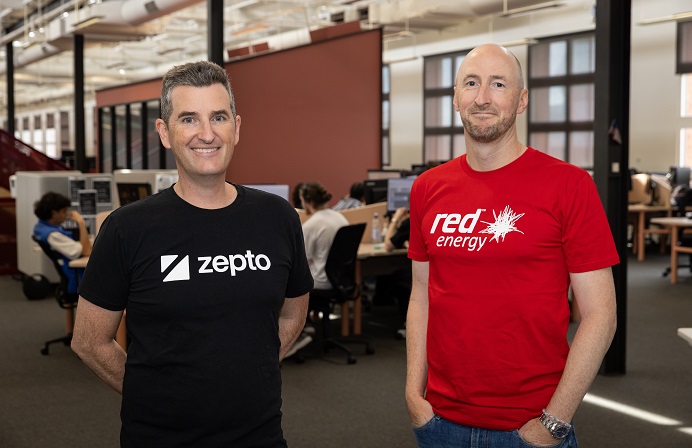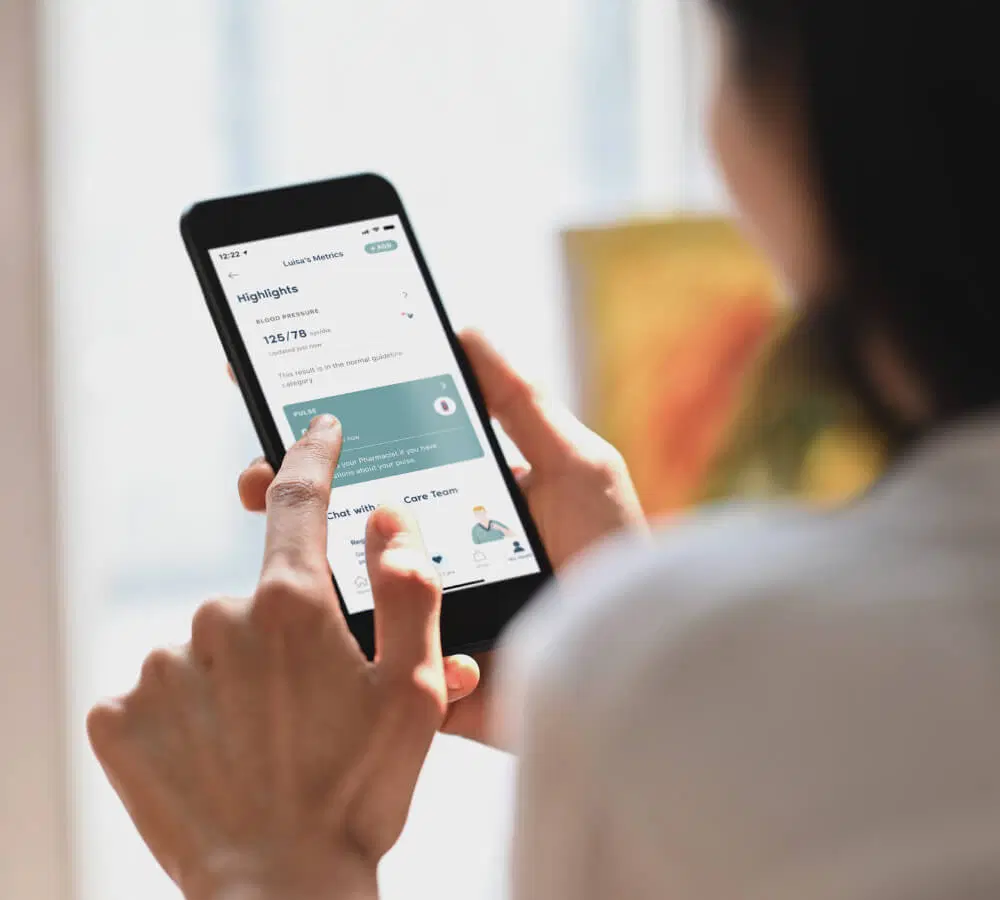
This is an abridged extract from the Digital CX Panel at the 2019 Future of Financial Services, Sydney conference.
Featured on the Digital CX panel:
- Kate Luft, Head of Retail Banking, Citi
- Heather McGovern, Chief Digital and Marketing Officer, MyState Bank
- Alex Homer, Chief Customer & Brand Officer, TAL
- Michael Bromley, Vice President, Digital and Customer Experience, Genpact
Moderated by Mark Sheppard.
—————————————————–
Mark Sheppard (Mod): It’s fair to say the Royal Commission has definitely damaged the reputation of the financial services industry. What do you think will this mean in terms of regaining customer trust? Where do you think we go from here?
Kate Luft (Citi): I smiled at this question because you picked an American bank to talk about some of the lessons learned, which is no surprise for us. I think we trust, in general, human nature. It’s earned through experiences, and it takes time. We realised that after the GFC (Global Financial Crisis); it’s no secret, [Citi] went through an interesting time, and we really had to look inward. I think what’s happening now is also what happened post-GFC in the US. It’s really creating and forcing the industry to focus on a few things: back on the products and propositions that add value to customers; simplifying the basics, in terms of innovating, but also innovating the little things, and making things that are simpler; and, perhaps most importantly, putting the focus back on culture and talent. So, with the focus on the customer again and on culture, you’ll see the industry regain trust. But, from experience, it will take time. It’s not going to be overnight and it’s not going to be in the next year, but with a continued focus on the industry, you’ll get there. It will be a long road ahead, though.
Alex Homer (TAL): I might add. So, like Kate, I’ve got the benefit of seeing another market get disrupted in a similar way to Australia. As you may tell from the accent, I’m from the UK originally. And I worked for one of the big banks there, which is Lloyds Banking Group, and all of the banks there had their reputation destroyed after the GFC – it affected the UK and the US markets far greater than it did in Australia. And, so, our reputation and trust levels were at an all-time low after the financial crisis. And I completely agree with Kate. There is no silver bullet and it will take time.
Now, while I recognise this is a CX digital panel, CX digital isn’t the only answer to this. It is part of the answer, but it’s not the only answer. And it’s important to recognise that, because… most people are facing the challenges post-Royal Commission, even startups because of increased regulation. This is what we did at Lloyd’s at the thick of the post-crisis period: we came back to ‘What is our purpose? ‘What do we actually want to do?’ And for it not just to be words, but really clear actions. Now, I don’t want to depress people in this room who haven’t had experience abroad, but it is – since 2008 – really only in the last two to three years that the banks’ reputations in the UK have uplifted… and Lloyds has lifted itself up from probably what looked to be, with its acquisition of HBOS, one of the bad ones. So, it takes time, and CX is part of that.
Heather McGovern (MyState): I agree wholeheartedly. I think winning trust back happens customer by customer. And that’s why it takes so long. It’s really important to acknowledge that it’s also incredibly fragile. Once you have that trust, you need to hang onto it tightly with both hands and protect against losing it, because the littlest things [can happen] and it can be lost in an instant. It really can.
Alex Homer (TAL): That’s absolutely right. We have the biggest – particularly the big players in each of the markets, and those that have been through the Royal Commission – spotlights on us right now and cannot afford to make any mistakes.
Michael Bromley (Genpact): This goes back to real change. This requires real change, not lip service change, not ‘back of the brochure’ change. This is ‘We’re going to fundamentally disrupt the way we do business as a bank in order to re-earn that trust’. And, of course, that takes time, it takes money, but it, most importantly, takes a mindset shift. We have to think of financial institutions differently than we used to think about them. And the problem with that is the people who run those institutions were there before. So, you have to realise that you need to shift your mindset, you need to think differently, you need to attack and solve problems differently than you did before or you’re going to get the same result. That’s the risk.
Mark Sheppard (Mod): So we’ve covered a bit around customer loyalty. How do you think this sense of trust might play out when compounded with the changing landscape of loyalty?
Michael Bromley (Genpact): You’ve heard it from a couple of people this morning, customer loyalty is not what it used to be. So, if your metrics are based on what you thought customer loyalty was a year or two or three or five years ago, you’ve already lost that game. You need to start thinking about continuous loyalty. You need to think about who’s going to attack you this minute – not this month, this quarter, this year. Because there’s somebody popping up to attack some piece of your business without you knowing it all the time. And, if you aren’t thinking about your customer in a real-time scenario, somebody else is. Again, it’s death by a thousand cuts. It may not hurt, day one, day 10 or even day one hundred, but eventually suddenly an arm falls off that you didn’t know. It’s going to hurt as the cuts get deeper and deeper. And it’s even harder because they’re hard to see. So, you’ve got to change your mindset and change your metrics.
Alex Homer (TAL): And, as a big player, there are some costs that you need to bear in order to, if you like, defend yourselves against some of these startups that are biting off different pieces. And it may require you to be proactive in terms of certain product lines and services that, perhaps, you’re squeezing out more margin than a new startup can. And it takes quite a bold leadership team and decisioning to say, ‘Actually, we’re going to be proactive about this and we’re going to change this. But if we do that, that will further defend our position and there are fewer opportunities for people to tackle that’. Now, there are probably lots of startups out there going, ‘Hang on a second, what about us?’ But, as a large player, and TAL is a large player in our industry, that’s how we’d be looking at it and trying to be proactive.
Michael Bromley (Genpact): And that’s where the partnerships come in. So, if you’re trying to defend and create that trust and create that customer experience and that’s not your forte, go partner with somebody who is. Go find a business that fits into your portfolio and can redefine what your portfolio might be and partner with them or buy them – whatever it takes. But you can change the perception of your business by stealing it from another business that you partner with. There’s no reason why you have to do that on your own and make it up from scratch. Reuse is good. Reuse the culture, reuse the approach that somebody who’s winning in that space is doing, and bring that into your own organisation. That’s how you’re gonna make a change.
Heather McGovern (MyState): It does take a mind shift within your organisation. Banks have traditionally relied on customer inertia. They will just stay, ‘It’s too hard to switch’. It hasn’t really been true loyalty; it’s been inertia. And it has fundamentally changed; you have to win that customer now and keep that customer based on the value that you’re providing. And if you can’t do it yourself, you’re right, Michael, you need to find others to partner with to get you there faster.
Michael Bromley (Genpact): Look, the telcos learned this years ago with mobile number portability. It was so hard to change telcos and then, all of a sudden, it wasn’t and everybody shifted. So that’s coming with Open Banking – Open Banking is the mobile number portability in the financial services industry.
Alex Homer (TAL): I agree with you. But even that takes time as well, and it’s not quite the disruption that perhaps people think. Again, the UK has had Open Banking for two years now… But the transition hasn’t happened as quickly as people thought. And that gives the incumbents an opportunity to sort themselves out and work out their strategy for this. So, it’s not necessarily a doom and gloom scenario; there’s a significant opportunity to get this right and, in fact, switching in the UK was introduced even before Open Banking in the time that I was there. And, you know what, it’s not necessarily loyalty, but that stickiness – the ‘I can’t be bothered to change my bank’ mentality – and I see that even more in Australia than I do [overseas] in the general insurance industry with the two big insurers, with the banks, even with the life insurers. People are quite complacent, thinking ‘I can’t be bothered to change’. It’ll happen more, but I don’t think it’s going to be quite the shock that people are perhaps painting a picture of. Over time, you’ve got to have a strategy, though.
Heather McGovern (MyState): It’s an erosion versus an exodus.
Kate Luft (Citi): But it goes back to where do you add value for customers? Because Open Banking is great, and you have to think through the use cases of how customers use it. The NPP (New Payments Platform), I think it’s fantastic. But customers still don’t know how to use it. I was at dinner [recently] and someone was using NPP to pay; it didn’t work. Within five seconds they switched off and went back to BSB and account number. So, it goes back to ‘How do we educate clients? How do you talk about how we value and add value back to customers?’ And some of that, for us, is through partnership.
We’re not a big player in Australia. Obviously, we’re a much larger player in the US. We have a venture arm in the US that actually runs our venture investing globally. They look for different startups or different partners that we can actually embed globally into our business models and add value back where we know we can’t create it ourselves. We’ve had that self-reflection of ‘succeed off your strengths, you can’t be everything to everyone’ and that’s where you see Disney and ESPN buying everyone and everything, because Disney will never be the sports company and Disney will never be ABC. So, with banking, it’s ‘How do we create those ecosystems and infrastructures?’ But the biggest principle is ‘How do we do that to add value back to the customers?’
Mark Sheppard (Mod): Let me pick up on that customer value piece and get us back into the CX theme a little more. And we’ll go to a question from the floor: ‘Digital CX is evolving beyond creating moments of customer delight to fixing pain points across entire customer journeys for long-term success. How true is that for you in your organisation?’
Heather McGovern (MyState): It’s fundamental, I’ll be honest. It really is. When you talk about the customer journey and transitioning across and between channels, let’s be honest, we’re still building so much of that out. It’s not a slick journey at the moment or anywhere near as slick as it needs to be or our customers expect it to be. And, honestly, the banks aren’t setting standard here. I think we’re playing catch up to so many other industries who are setting the standard. People’s tolerance for a poor customer experience, that bar just keeps on getting lifted and lifted. So, it’s a constant effort in terms of reengineering and smoothing that customer experience across the multiple channels that we’ve got.
Michael Bromley (Genpact): I’d also like to add, the customer journey, in and of itself, isn’t enough. You have to layer the customer journey on top of everything that’s there that needs to be in place to support it: your infrastructure, your process, your operations, your technology, your tools, the client experience, the customer experience, the employee experience – all of that has to be layered together. And if you can build that blueprint and understand it end-to-end, then you can do true transformation, because you can connect your backend systems, which are running all of this, to the front-end – and historically those things don’t connect. Getting front-end designers to talk to the process people – it’s like trying to get Martians to teach Swahili to fish. You can’t do it. But, if you can paint that picture, create that blueprint that connects the front-end and the services to the operations and the process in the backend, that’s the only way you can get true end-to-end transformation. That’s the only way you can really change the experience and change the way you deliver experience in a sustainable way.
Alex Homer (TAL): I’ll also add, we have been doing exactly that. Our challenge with customer experience is lots of different departments, lots of different processes, lots of different channels, lots of different partners, and bringing that all together. We decided about eight months ago to focus on one business line first and get that right. But to look at it end-to-end, holistically, how many customer journey maps have we seen on our walls, in our offices, particularly if we’re from big organisations, and just go ‘Oh wow, that looks pretty’, but what does that actually do? And that’s what we’ve got to do with these journey maps.
We’ve been on a bit of a journey at TAL. Now, we haven’t completed this journey, but we’re quite far through, where we’ve built that end-to-end map. And, actually, it now builds out the detail underneath to say ‘What systems support this process? What are the SLAs is in this process? How does the customer experience match to that – whether it’s NPS, CSAT scores, or some other feedback that we get from different customer forums. And, now, what we’re able to do is unite those parts of the organisation that look after those parts of the value chain, so that they can all individually see, not just first of all ‘How does it work end-to-end?’, but then also ‘What is my specific role in this piece of the pie?’, because you’ve got to unite your people with this – your technology, your UX people, your customer service people. And, actually, that is now starting, slowly but surely, to have a good impact. And it’s something that now other channels, both at business lies – we’ve got three key business lines – are now asking for and, you were talking earlier Michael about ‘people experience’. Even our HR department’s now saying ‘Right, we want one of those for that.’ So I totally agree with you.
Michael Bromley (Genpact): They’re called Service Blueprints, if you’re unfamiliar with them. We do them every day for clients. And we’re working with HR departments, risk groups, business lines, banking, lending; we’re doing this across all industries as well, it’s not just financial services. But everybody wants to get that holistic view of the service they’re trying to create in order to redesign it, in order to design it better, fix the gaps, find the opportunities, and and develop that pipeline so that they can understand ‘This should be prioritised above that, because we can see all the effort it’s going to take to deliver it and all the value it’s going to create.’
Alex Homer (TAL): And it becomes incremental change, rather than a one-off transformation. I’ve tried to avoid any word of transformation, or you could say it’s ‘incremental transformation’ – it’s going to take time. Don’t bite off more than you can chew with these things because otherwise, the business case never stacks up.
Heather McGovern (MyState): The key thing that we’ve done, in a similar kind of vein, is picking a product line or picking a customer task – and it might be buying a house, for example, and mapping the end-to-end – but really interrogating the data and bouncing it through and working through it with customers to really understand what are their moments of truth as part of that journey. So, what’s the most important thing that we need to focus our attention on from their perspective? And, sometimes, there are some real surprises in there that you think ‘You know, that’s fulfilment, so to speak. But, actually, you know what, that was the moment of truth for the customer in terms of getting it right. So, that’s really where we need to focus our first attention to get that piece right. And then we can work on the little pieces around the side.
Kate Luft (Citi): And the lessons learned that I’ve experienced – and it goes back to you, Michael – and it goes back to, you can have the sexiest UX in the front-end and you could have the sausage factory in the back-end. So, as much as we talk about the client experience, it’s also employee experience. One of the challenges we’ve had, especially in our mortgage business as we’ve really come to market last year and a half and saying we’re growing, is how do you… limit the number of clicks an employee has to do to make a decision? When we first looked at it, it was something like 65 clicks to make a decision, which is absolutely insane; and I’m sure it was worse at one point. We’ve now limited that to sub-20. How do they really go through the experience? And that will only help the client experience. But, it becomes that full end-to-end where you truly have just the Ferrari in front [versus] the Holden… So, it’s important to look end-to-end, not just for the customer but also the employee, because the happy path doesn’t always occur. I would love to say all clients go through a happy path, but we always know there’s some iteration that someone gets put out and someone goes into a manual process. And how do we make that manual process easier for our employees, because that will feed into the client experience?
Michael Bromley: And it shocks me when I talk to organisations that say they’re customer-centric or customer-driven or customer-first, and then I asked to see their customer experience strategy and they say, ‘What now?’ Where’s this strategy that you’re employing to deliver the customer experience that you want to achieve? And then, if if I get past that, which is rare. Great. Now show me the employee experience strategy that’s going to support that. And then it’s almost a zero-sum game at that point. If you don’t have more than a vision, which is frankly almost worthless, then you have almost nothing. You need to have a strategy that says ‘Here’s the customer experience I’m going to drive. Here’s how I’m going to achieve it. Here’s what I’m going to do. Here’s what I’m not going to do. Here’s where I’m going to compete. Here’s how we think we can differentiate and win on the customer experience front.’ You need that. Because you can’t just luck into a good customer experience. And, more importantly, you then need to build your organisation in a way that will support that. That means you have to have a strategy and a plan to execute in your organisation that will support that customer experience vision through the strategy that you’ve identified. Those are two pieces of work that, if you don’t have now, you should do, because, otherwise, you’re just throwing spaghetti at the wall and seeing what sticks. That doesn’t cut it.
—————————————————–





